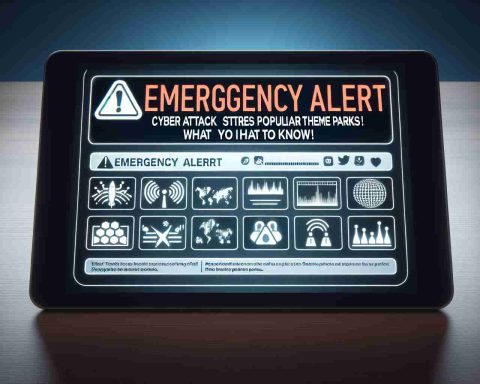Innovative Solution for Ocean Security
As the world grapples with safeguarding critical underwater infrastructure, advancements in technology have paved the way for a groundbreaking solution to detect unmanned submarines looming beneath the ocean’s surface.
Revolutionizing Ocean Surveillance
north.io, a pioneering tech company, is on the cusp of unveiling a cutting-edge system designed to track the movements of “ghost ships” that pose a threat to maritime security. This innovative technology aims to swiftly identify suspicious activities both on and below the water’s surface. By analyzing data from various sources, including radar satellites, the system can pinpoint vessels that have deactivated their GPS transponders, indicating a potential threat.
Enhancing Maritime Safety
A team of 60 specialists across diverse fields is spearheading the “Argus” project, led by security expert Henrik Schilling. With the ever-looming possibility of new attacks on critical infrastructure, the need for enhanced collaboration among national and international agencies has never been more critical. Schilling emphasizes the importance of proactive measures to mitigate the threat of attacks, highlighting the necessity of effective coordination both within Germany and in conjunction with other nations.
Government Investment in Ocean Security
With a significant investment from the government amounting to approximately 3.5 million euros, the “Argus” project aims to revolutionize ocean monitoring and response capabilities. The project’s success hinges on the seamless integration of sensitive data and the swift identification of anomalies such as ghost ships, ultimately fortifying defenses against potential threats similar to the Nord Stream sabotage incident.
Forward Progress for Ocean Security
The development of advanced technologies for ocean surveillance represents a crucial step forward in safeguarding critical infrastructure and ensuring the safety and security of maritime operations. Through collaborative efforts and innovative solutions, the future of ocean security appears brighter than ever before.
Advancing Technology for Detecting Unmanned Submarines
As the need for robust ocean security measures intensifies, advancements in technology continue to shape innovative solutions for detecting unmanned submarines lurking beneath the ocean’s surface. While the “Argus” project spearheaded by north.io has made significant strides in monitoring suspicious activities, several key questions remain unanswered that shed light on the complexities of detecting and countering underwater threats.
What are the most important questions in Submarine Detection Technology?
1. How can underwater drones be leveraged to enhance the detection of unmanned submarines in remote ocean regions?
2. What role does artificial intelligence play in improving the accuracy and efficiency of identifying stealthy underwater vessels?
3. Are there emerging sensor technologies that can overcome the challenges posed by deep-sea environments and adverse weather conditions?
Key Challenges and Controversies in Submarine Detection
One of the primary challenges associated with detecting unmanned submarines lies in differentiating friendly underwater vehicles from potential threats. This ambiguity can lead to false alarms or missed opportunities to intercept malicious activities. Moreover, the integration of various surveillance systems and data sources poses a technical challenge in achieving seamless and real-time monitoring capabilities across vast ocean expanses.
Advantages and Disadvantages of New Detection Technologies
Advantages:
– Enhanced precision in identifying suspicious underwater activities and potential threats.
– Improved response times to security breaches, minimizing the risk of catastrophic incidents.
– Greater situational awareness for maritime authorities to coordinate preventive measures effectively.
Disadvantages:
– High initial investment costs for developing and deploying sophisticated detection systems.
– Vulnerabilities in technology that adversaries could exploit to evade detection.
– Privacy concerns regarding the extensive surveillance of oceanic environments and potential impacts on marine ecosystems.
For further insights into cutting-edge technologies and strategies in maritime security, readers can explore the domain of Maritime Executive, a reputable source of industry news and analysis in the maritime sector. By staying informed on the latest advancements and challenges in submarine detection technology, stakeholders can better navigate the evolving landscape of ocean security.
















